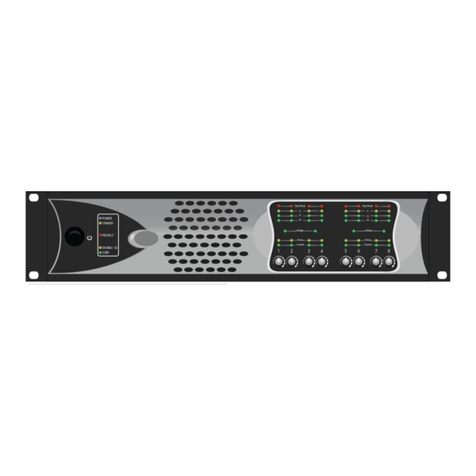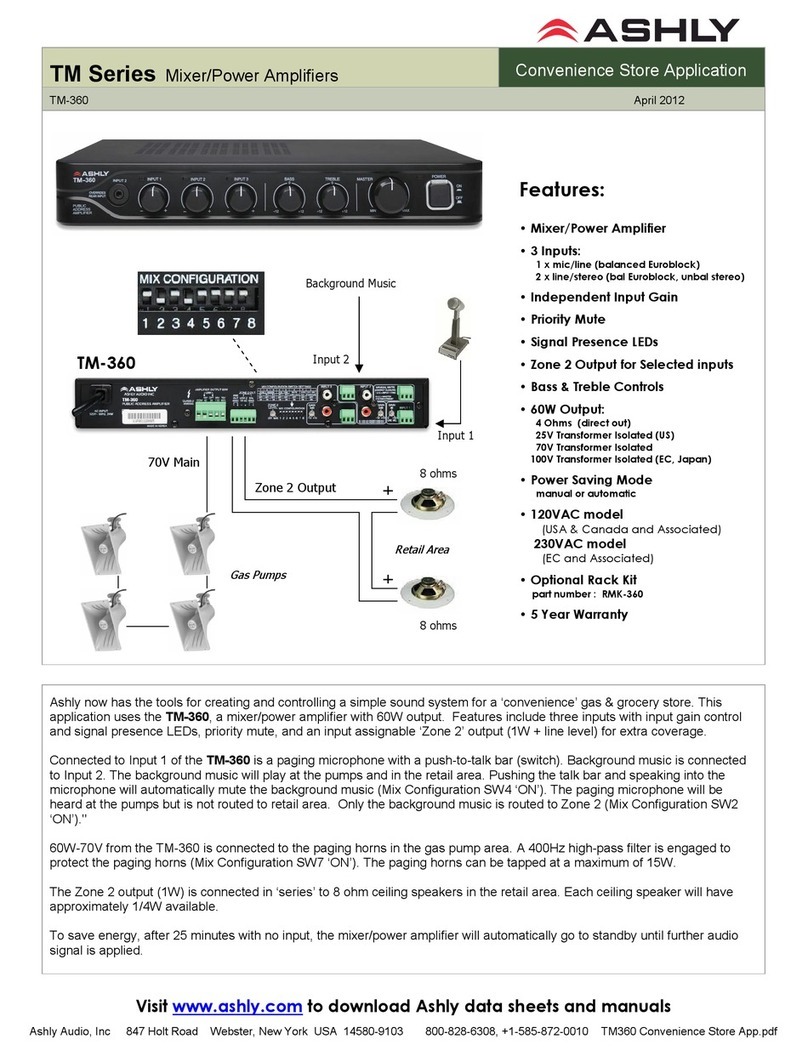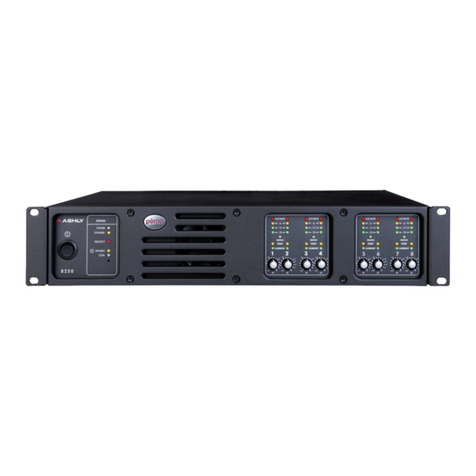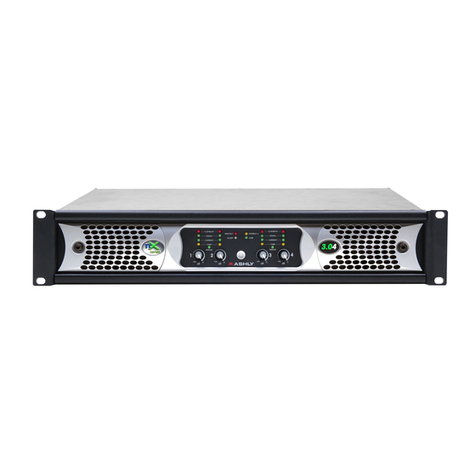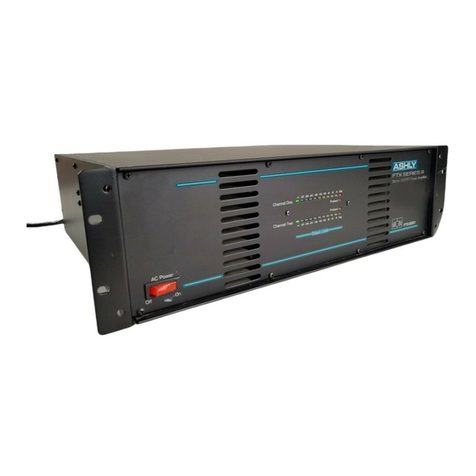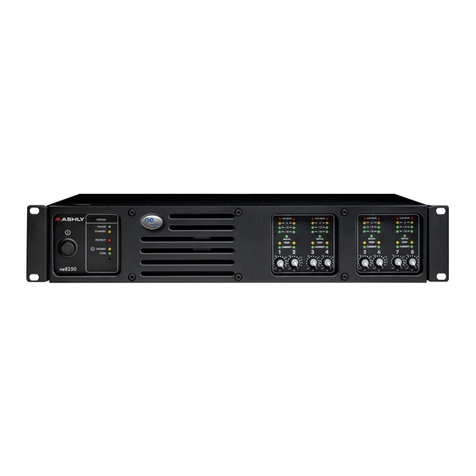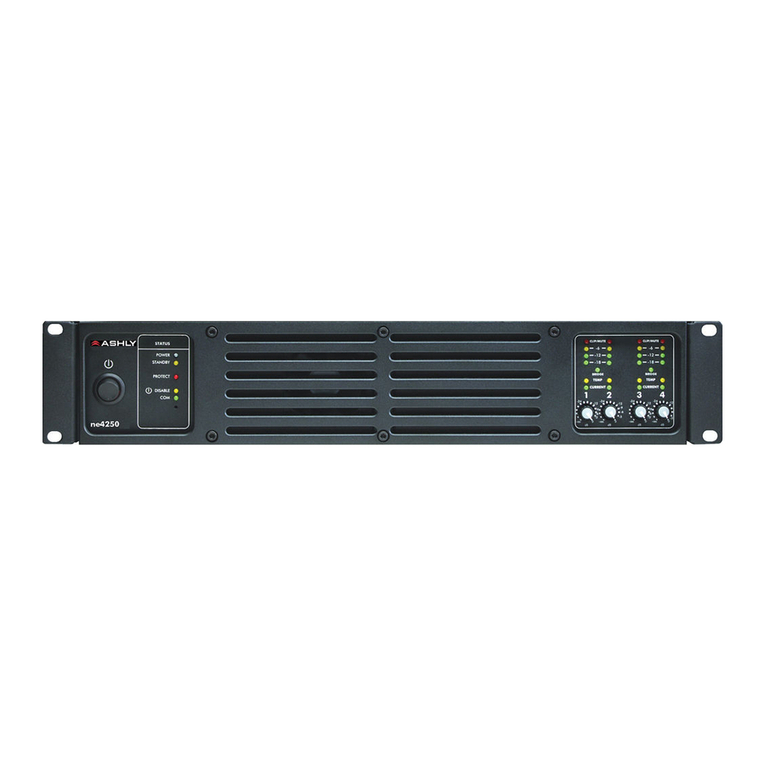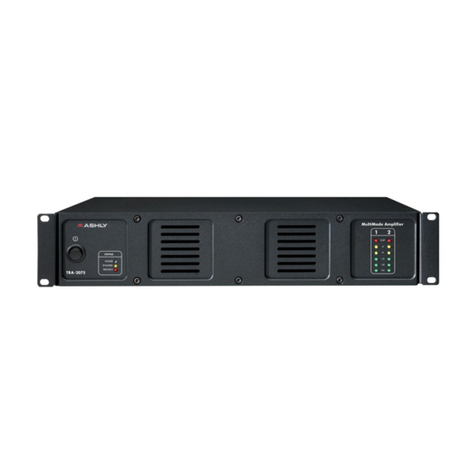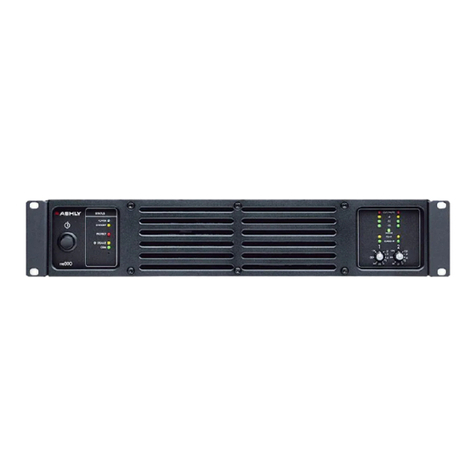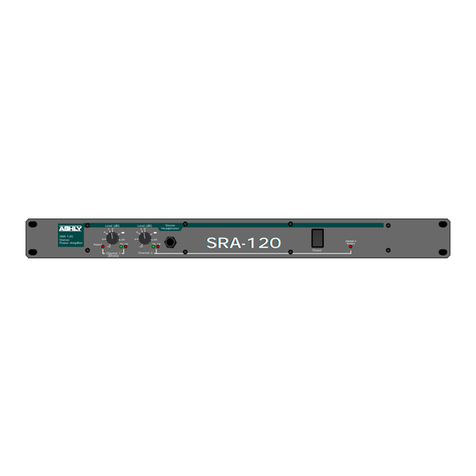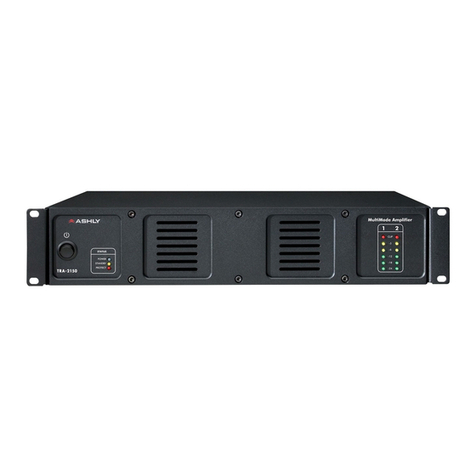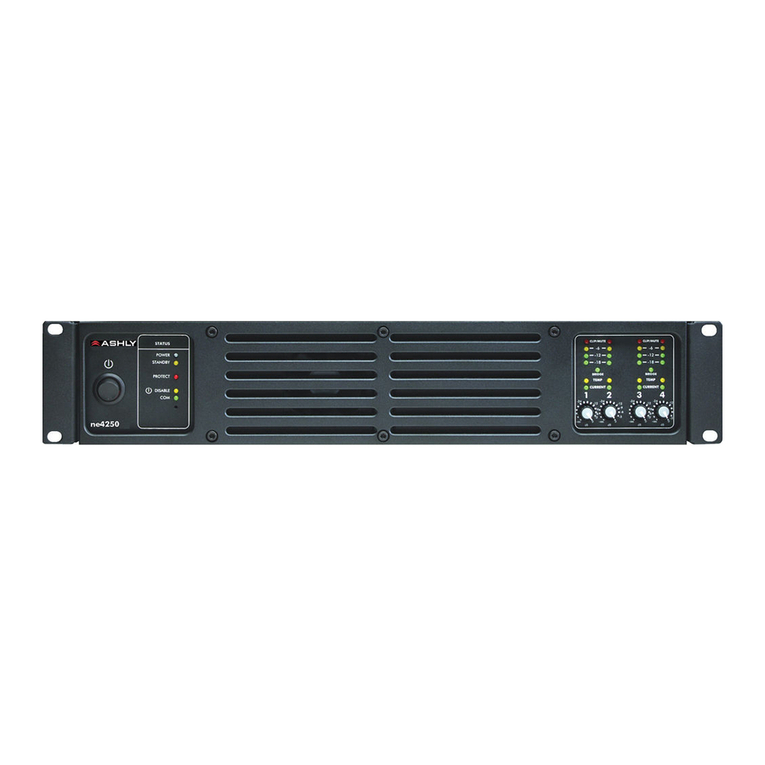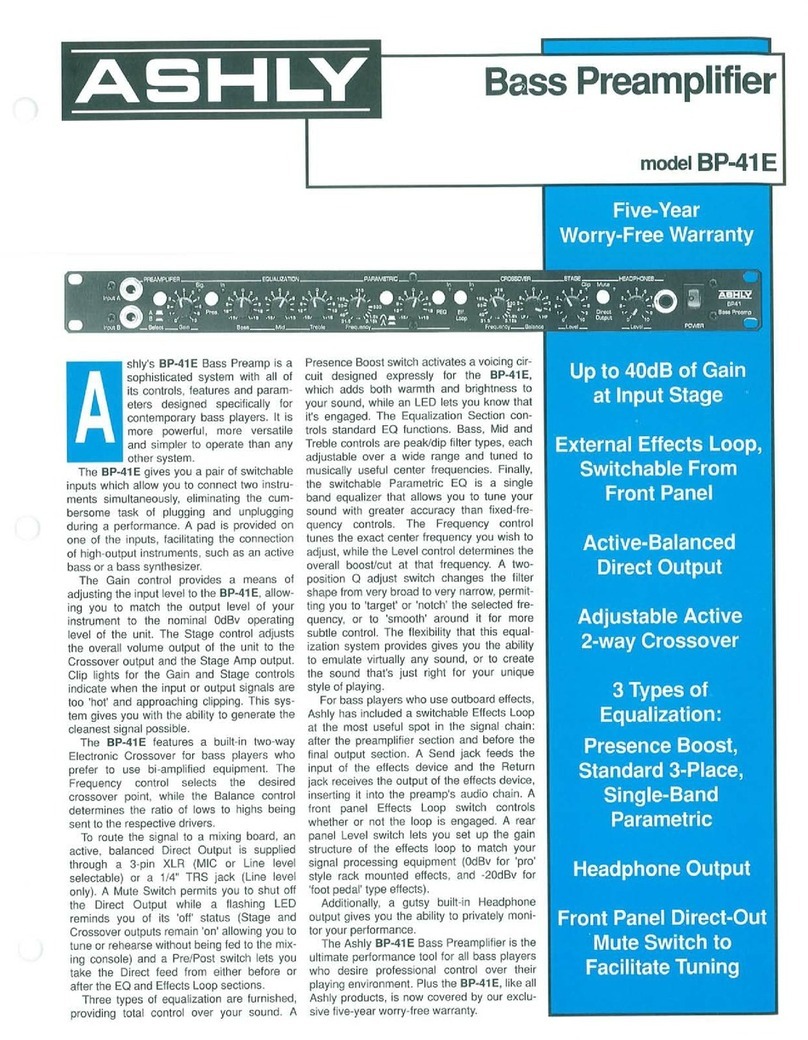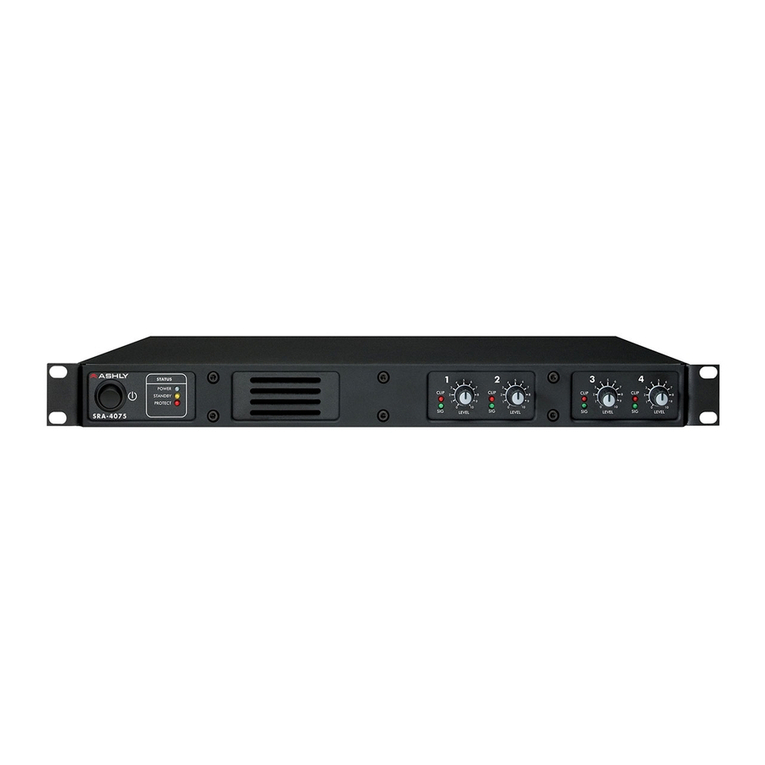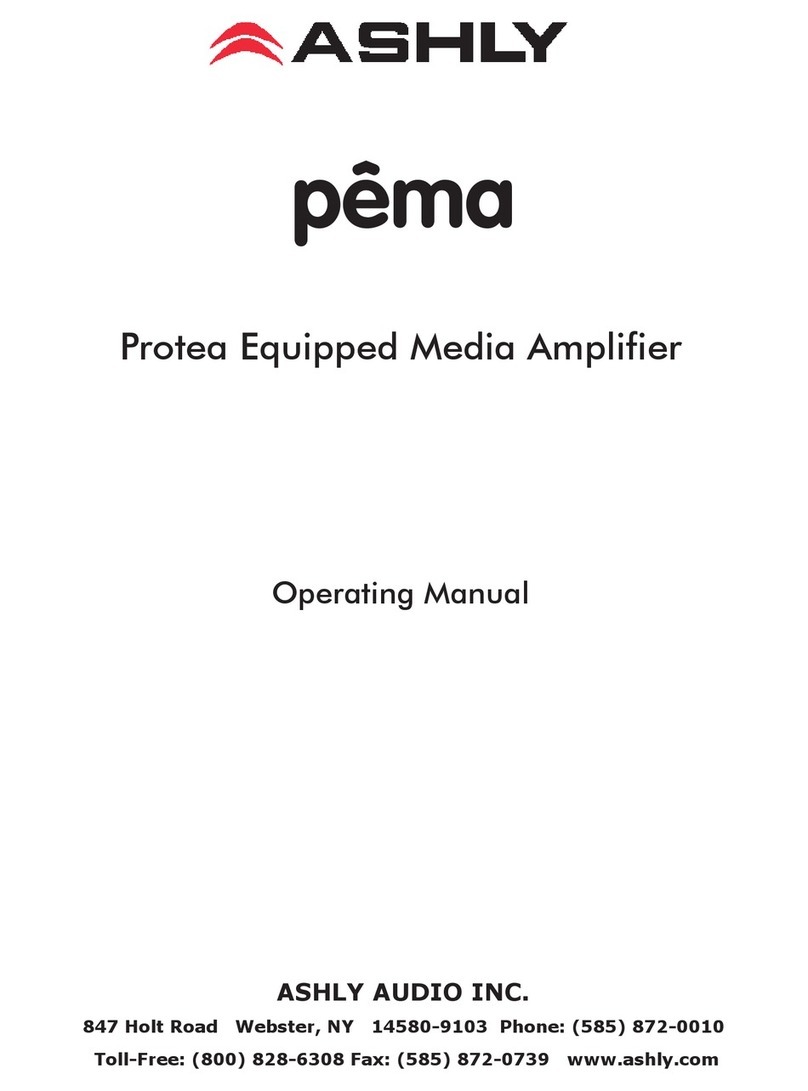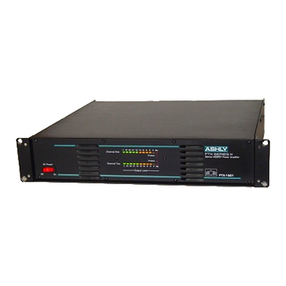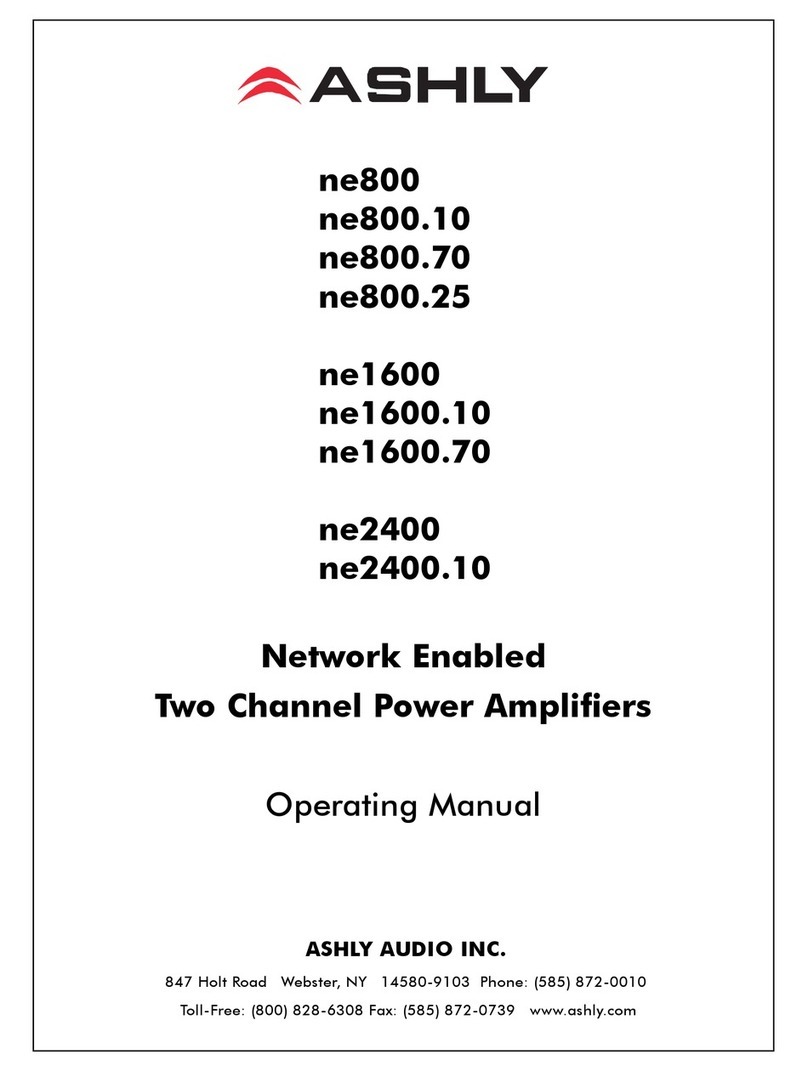
10
Operating Manual - Powerflex Multi-Channel Power Amplifier
8. SELF-PROTECTION FEATURES
Powerflex amplifiers contain circuitry to self-pro-
tect during extreme fault conditions. These fault condi-
tions are:
1.) Power supply undervoltage
2.) Power supply overvoltage
3.) Output overcurrent
4.) Heat sink overtemperature
5.) Unacceptable DC or high frequency output content
6.) AC power interruption
Except for AC power interruption, the detection
of any fault will result in the activation of protection cir-
cuitry on a particular module, which consists of two chan-
nels. That is, a short circuit on the output of channel 1
will result in both channel 1 and channel 2 entering pro-
tect mode. This is because the signal processing module,
which processes both channels simultaneously, does not
distinguish between the two channels within a channel pair
when processing a fault.
An AC power interruption will result in all chan-
nels entering protect mode simultaneously, just as if the
amplifier is being turned off.
In all cases, the amplifier will restart the signal
processing module after a short delay and will reconnect
the speakers after several seconds if no further fault con-
ditions exist. This allows the servo circuitry to bring any
residual DC offsets to zero before speakers are connected.
Specific conditions resulting in a fault are as follows:
8.1 Power supply undervoltage - less than about
55 volts on the either supply rail. Possible causes would
be total load on the outputs exceeding recommendations
(remove some speakers - 4Ωload min, 8Ωmin bridged),
low AC mains voltage (reduce extension cord length or
increase wire size, or switch to an AC mains circuit more
capable of supporting the amplifier's power requirements),
or improper AC inlet mains voltage setting (make sure
nominalAC mains voltage matches the number in the view-
ing window on the AC inlet).
8.2 Power supply overvoltage - more than about
92 volts on either supply rail. Possible causes would be
highAC mains voltage (change to anAC mains circuit with
voltage within the amplifier's stated requirements) or im-
properAC inlet mains voltage setting (make sure nominal
AC mains voltage matches the number in the viewing win-
dow on the AC inlet).
8.3 Output overcurrent - more than 15 to 20 amps
being drawn from any output. Possible causes would be
total load on the affected output exceeding recommenda-
tions (disconnect some speakers), or a short circuit on one
of the outputs driven by the affected module (inspect
speaker wiring for proper connection).
The above conditions are checked by the signal
processing module on a switching cycle by switching cycle
basis and are therefore monitored as often as a million or
more times a second, allowing protection well before de-
structive conditions have time to cause part failure.
8.4 Heat sink overtemperature - a measured heat
sink extrusion temperature of more than 85 to 90 degrees
C. The three-speed fan will switch to medium speed at an
extrusion temperature of 45 to 50 degrees C, and to high
speed at a temperature of 70 to 75 degrees C. The
overtemperature fault will clear itself when the measured
temperature is below about 70 degrees C. The fan will
operate at low speed below about 50 degrees C.
8.5 Unacceptable DC or high frequency output
content - a DC offset in the output signal of more than a
few hundred millivolts indicates module failure, and will
trigger a DC protect fault. High frequency (20kHz to
100kHz) in the output at high amplitudes can cause speaker
damage and causes a fault condition more or less rapidly
as frequency and amplitude vary.
These two conditions (DC and HF) are tested by
the same circuit so the exact cause cannot be isolated. If
the fault condition persists after disconnecting all inputs
and outputs from the amplifier, there is probably a module
failure requiring service. Note: the self-testing circuit may
take as long as 30 seconds to recover from this fault, so be
sure to give the amplifier enough time to reset itself. If
after 30 seconds the module has recovered, begin plug-
ging in one input and output at a time in an effort to iso-
late a system high-frequency or oscillation problem.
8.6 AC power interruption - a dropout (or brown-
out of sufficient magnitude) of more than one half mains
line cycle and less than one whole cycle in duration.
